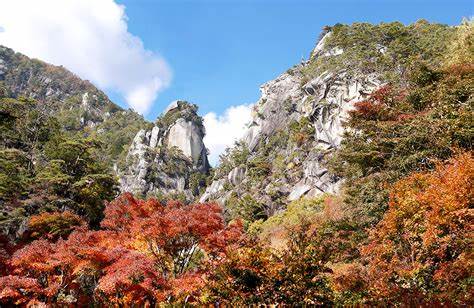Yamanashi prefecture
Lake Kawaguchiko


Located at the northern foot of Mt. Fuji, Lake Kawaguchi is one of the Fuji Five Lakes and the second largest of the five lakes.
At an elevation of 830 m, it is the lowest of the Fuji Five Lakes and is registered as a World Heritage Site as a component of Mt.
There are many places of interest around Lake Kawaguchi, such as cherry blossoms, autumn leaves, and seasonal flowers, where you can enjoy both the natural scenery and the view of Mt. Fuji reflected on the surface of Lake Kawaguchi is also popular, and there is no shortage of places to take pictures of the spectacular scenery.
Oshinohakkai


Oshinohakkai, a natural monument, is a spring-fed pond whose source is the underground water of Mt. Oshino Hakkai includes eight ponds: Oshino Pond, Tamano Pond, Benten Pond, Sanbo Pond, Lotus Pond, Shizukai Pond, Eboshi-ike Pond, and Numano Pond. Each pond has its own unique scenery and atmosphere. The clear, pure water produced by the spring and the natural environment are in harmony with each other, creating a beautiful landscape.
Niikura Fuji Sengen Shrine


Niikura Fuji Sengen Shrine is located halfway up Mount Niikura in Fujiyoshida City, Yamanashi Prefecture. The red Otorii (Grand Gate) and the five-story Churyo (Loyalty) Pagoda, a memorial to the war dead, are well-known both at home and abroad as symbols of the area, and have attracted many devotees. From the shrine grounds, visitors can enjoy a beautiful view of Mt. Located in Niikurayama Sengen Park, the shrine is a popular sightseeing spot that attracts many visitors.
Maple Corridor


In autumn, the leaves of about 500 trees along the shore of Lake Kawaguchi turn red and reflect the beautiful scenery on the lake. Highlights include the “Maple Corridor,” lined with approximately 60 giant maple trees, and the “Maple Tunnel,” where brightly colored maple trees cover the road. During the period, the “Maple Corridor” is the main attraction, and the surrounding area will be illuminated until 22:00. Visitors can enjoy the fantastic sight of Mt. Fuji floating in the colorful autumn leaves illuminated by the lights.
Shosenkyo


The mountainous area around the Shosenkyo Gorge is a place of water source worship, producing crystals believed to be a mass of water. A visit to the upper reaches of the Arakawa River, which flows through the area, is astonished by the large and small waterfalls, huge stones, and strange rocks that have been formed by erosion over a long period of time. The beauty of this valley, which can be called a work of art created by water, miraculously appeared when a new road was opened at the end of the Edo period, and has been refined as one of the most scenic spots in Japan through the enthusiasm of the local people.
Birthplace of Japanese wine


Kofu is located in a basin with a large temperature difference between day and night, long hours of sunlight, and many sloping terrain. This climate is ideal for grape cultivation, and the Koshu grape, which is indigenous to the region, was used to produce Japan’s first domestically produced wine.
Oishi Park


This lakeside park is popular for its view of Mount Fuji over Lake Kawaguchi. In early summer, when lavenders are in bloom, the park is especially crowded as the site of the “Kawaguchiko Herb Festival. The park is a popular spot for photographing Mt. Fuji throughout the year, with seasonal flowers in bloom throughout the four seasons, as well as the autumn leaves and snowfall, each with their own beauty.
Lake Yamanakako


Lake Yamanakako is the closest forest and lake resort from Tokyo. Fuji, and the view of Mt. Fuji over the lake is breathtaking.
Fuji is not the only attraction of Yamanakako. Fuji, but also the seasonal flowers, the autumn leaves in fall, and the ice on the trees in winter.
